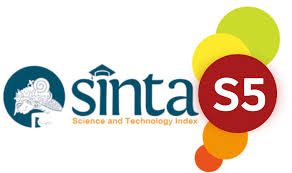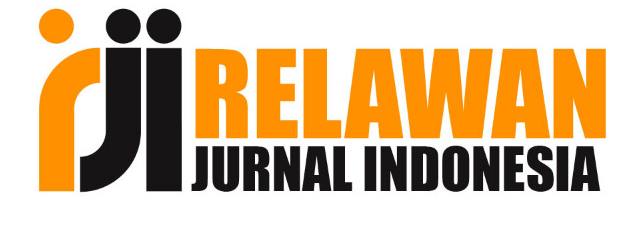Significant Roles of Children’s Literature In Efl
DOI:
https://doi.org/10.36982/jge.v8i1.798Abstract
ABSTRACT
This article describes about the concept of children’s literature, the genre and the role of children’s literature in teaching English as a foreign language. In Indonesia, English as a foreign language because Indonesian use Bahasa Indonesia for communication.Children’s literature is a kind of literary texts such as picture story books, fable, novel, short stories etc in order to make students interested in reading especially for English as a foreign language. Sometimes they feel bored and lazy to learn English because they think that it is a difficult subject therefore, English teacher in Indonesia usually teaches the students with language combination between Indonesia and English in teaching and learning pocess in order to make their students understand what they learn. Not only that, teachers always use textbook as material in teaching and learning process without introducing new material like literature text and usually the use of teacher-centered strategy in classroom without involving students. One solution for solving this problem is introducing literature in teaching and learning process. Motivating students to learn English Literature is one of the best approach for teacher in teaching of English language skills (reading, writing, speaking and listening) because it can make students enhance their knowledge from story that they read in literary text.
Keywords : Childrens’ literature, genre and role of children’s literature
ABSTRAK
Artikel ini akan menjelaskan tentang konsep sastra anak-anak, macam-macam dan peran sastra terhadap anak-anak dalam mengajar bahasa Inggris sebagai bahasa asing.Di Indonesia, Bahasa Inggris sebagai bahasa asing karena orang Indonesia menggunakan bahasa Indonesia untuk berkomunikasi.Sastra anak-anak adalah jenis teks sastra seperti buku cerita bergambar, dongeng, novel, cerita pendek dll supaya siswa tertarik membaca terutama untuk bahasa Inggris sebagai bahasa asing. Terkadang mereka merasa bosan dan malas belajar bahasa Inggris karena mereka pikir itu adalah pelajaran yang sulit oleh karena itu guru pelajaran bahasa Inggris di Indonesia biasanya mengajar siswa dengan menggunakan bahasa campuran antara bahasa Indonesia dan bahsa Inggris di proses belajar mengajar supaya siswa mengerti apa yang mereka pelajari. Tidak hanya itu, guru selalu menggunakan buku paket sebagai bahan ajar di proses belajar mengajar tanpa mengenalkan bahan ajar baru seperti teks sastra dan biasanya menggunakan strategi yang berpusat pada guru tanpa melibatkan siswa. Salah satu solusi untuk mengatasi masalah ini adalah memperkenalkan sastra dalam proses belajar mengajar. Memotivasi siswa untuk belajar Sastra Inggris adalah salah satu pendekatan terbaik untuk guru dalam mengajar keterampilan bahasa Inggris (membaca, menulis, berbicara dan mendengarkan) karena itu dapat membuat siswa meningkatkan pengetahuan mereka dari cerita yang mereka baca dalam teks sastra.
Kata kunci : Sastra Anak- anak, macam sastra dan peran sastra anak- anakReferences
Allen, V. G. 1994. Selecting materials for the reading instruction of ESL children. In Hadaway, N. L., Vardell, S. M., Young, T. A, Literature-based instruction with English Language Learners, K-12 (pp.43-44). Boston, MA:Allyn & Bacon.
Anderson, N. (2006). Elementary Children’s Literature. Boston, MA: Pearson Education.
Belsky, S. (2006) The effects of using children’s literature with adolescents in the english as a foreign language classroom. (Dissertation prepared for the degree of Doctor of Philoshopy) University of North Texas. Retrieved fromdigital.library.unt.edu/ark:/67531/metadc5481/m2/.../dissertation.pdf
Baruah, N. 2013. Children literature: Its role & importance in present context. Asian Journal of Research In social Science & Humanitie, 3 (9), 1-4. Retrieved from www.indianjournals.com
Barone, D. M. 2011. Children’s Literature In The Classroom: Engaging Lifelong Readers. New York, NY: The Guilford Press.
Brewster, J., Ellis, G. & Girard, D. 1992. The primary English teacher‟s guide. London: Penguin.
Brumfit, C. J. 1981. Reading skills and the study of literature in a foreign language. System 9(3). 243–248. Retrieved from www.sciencedirect.com/science /.../pii/0346251X81900476
Chang (2004). The role of children’s literature in the teaching of English to young learners in Taiwan (Doctoral dissertation, The University of Waikato, Taiwan). Retrieved from www.asian-efl-journal.com/Thesis_Chang.pdf
Clandfield, L. & Duncan, F. 2006. Teaching materials: Using literature in the EFL/ESL classroom. Retrieved from www.onestopenglish.com
Collie, J. & Slater, S. 1987. Literature in the language classroom. Cambridge : Cambridge University Press.
Collie, J. & Slater, S. 1990. Literature in the language classroom: A Resource Book of Ideas and Activities. Cambridge: CUP
Coleman, H. 2010. The English language in development. British Council, 1-23. Retrieved from https://www.teachingenglish.org.uk/sites/teacheng/files/UK011-English-Language-Development.pdf.
Cooper, D.J. 1997. What is literature-based instruction? Retrieved from http://www.eduplace.com/reading/index.htm
Diem, C. D. 2011. 3-Ls: A model for teaching young learner. TEFLIN Journal,22(2),125-149. Retrieved from journal.teflin.org/index.php/teflin/article/viewFile/274/220
Dogrul, K . S. 2007 Effects of children’s literature on success in vocabulary teaching (Mater’s thesis). Retrieved from http://tez2.yok.gov.tr/
Hismanoglu, M. 2005. Teaching English through literature. Journal of Language and Linguistic Studies. 1(1), 1-14. Retrieved from www.jlls.org/index.php/jlls/article/viewFile/6/7
IEA. 2012. PIRLS 2011 international results in reading. Retrieved from http://timssandpirls.bc.edu.
Ivone, F. M. 2005. Teaching English as a foreign language in Indonesia: The urge to improve classroom vocabulary instruction. The Association of Teachers of English as a Foreign Language in Indonesia, 16(2), 195-208. Retrieved from http://www.journal.teflin.org/index.php/teflin/article/viewFile/95/83.
Kuhiwczak, P. 1999. Enchantment in the classroom: Children‘s literature as a teaching aid. In S. Rixon (Ed.), Young learners of English: Some research perspectives (pp.43-54). Harlow: Longman.
Lenaghan, R. T. (Ed.). 1967. Caxton’s Aesop. Cambridge, MA: Harvard University Press
Lazar, G. 1993. Literature and Language Teaching: A Guide for Teachers and Trainers. Cambridge, UK: Cambridge University Press.
Llach, P. A. 2007. Teaching English language through literature: The Waste Land in the EFL classroom. University de la Rioja, 7-17. Retrieved from http://www.ual.es/odisea/odisea08-Augustan.pdf
McDowell, M. 1973. Fiction for children and adults:some essential differences. Children’s literature in education, 10, 50-53. Retrieved from http://dx.doi.org/10.1598/RRQ.32.1.4
Melon, C.F. 1994. Reading for pleasure: Short novels in academic university ESL programs. The Journal of Imagination in Language Learning and Teaching, 2. Retrieved from http://www.njcu.edu/cil/vol2/meloni.html
Mikulecky, B., & Jeffries, L. 1998. Reading power. New York, NY: Longman.
Morrow, L. M., Pressley, M., Smith, J. K., & Smith, M. 1997. The effect of literature-based program integrated into literacy and science instruction with children from diverse backgrounds. Reading Research Quarterly, 32(1), 54-76. Retrieved from files.eric.ed.gov/fulltext/ED384012.pdf
Norton, D. E. 1991. Through the Eyes of a Child - An Introduction to Children's Literature (3rd ed.). New York, NY: Macmillan Publishing Company.
Smallwood, B. A. 1988. Children‘s literature for limited English proficient students, Ages 9-14. WATESOL Working Papers, 4, 1-21. (Eric Document Reproduction Service No. ED356647). Studies of Reading, 11(4), 289-312
Takenaga. (n.d). The benefits of the use of children’s literature in English language and Global citizenship education in JapanRetrieved from forumonpublicpolicy.com/ vol2012.no2/archive/takenaga.pdf
Tomlinson, B. 1986.Using poetry with mixed ability language classess. ELT Journal,40(1),33-41
Tomlinson, C. M., & Lynch, B. C. 2002. Essentials for children’s literature. Boston, MA: Allyn and Bacon.
Turker, F. 1991. Using "Literature" in language teaching. Hacettepe Üniversitesi EAltim Fakültesi Dergisi, 299-305. Retrieved from http://dergipark.ulakbim.gov.tr/hunefd/article/viewFile/5000049295/5000046616.
Young, T. A., Tuiaea, L., & Award, B. 2010. Transforming Traditional Tales to Improve Comprehension and Composition. In B. Moss, & D. Lapp, Teaching New Literacies in Grades 4-6: Resources for 21st-Century Classroom (pp. 13-25). New York, NY: Guilford Press.
Ziya, S. 2009. Eficiency of literature integrated approach on vocabulary competence (Master’s Thesis). Trakya University, Edirne, Turkey.
Zhen, C. 2012. Characteristics and strategies of literature teaching in the EFL context in China. International Journal of Electronics and Communication Engineering, 5(3), 35-43. Retrieved from http://www.ripublication.com/ijepa/ijepav2n1_3.pdf.
Downloads
Published
How to Cite
Issue
Section
License
Global Expert: Jurnal Bahasa dan Sastra is published by Universitas Indo Global Mandiri and licensed under a Creative Commons Attribution-ShareAlike 4.0 International License.











